Oven Roasted Brisket Recipe

Fact Checked and Reviewed By:
A K M Rabiour Rahman Raju
BSc Ag Honors in Agriculture
Master's in Food Safety & Security
Bangladesh Agricultural University
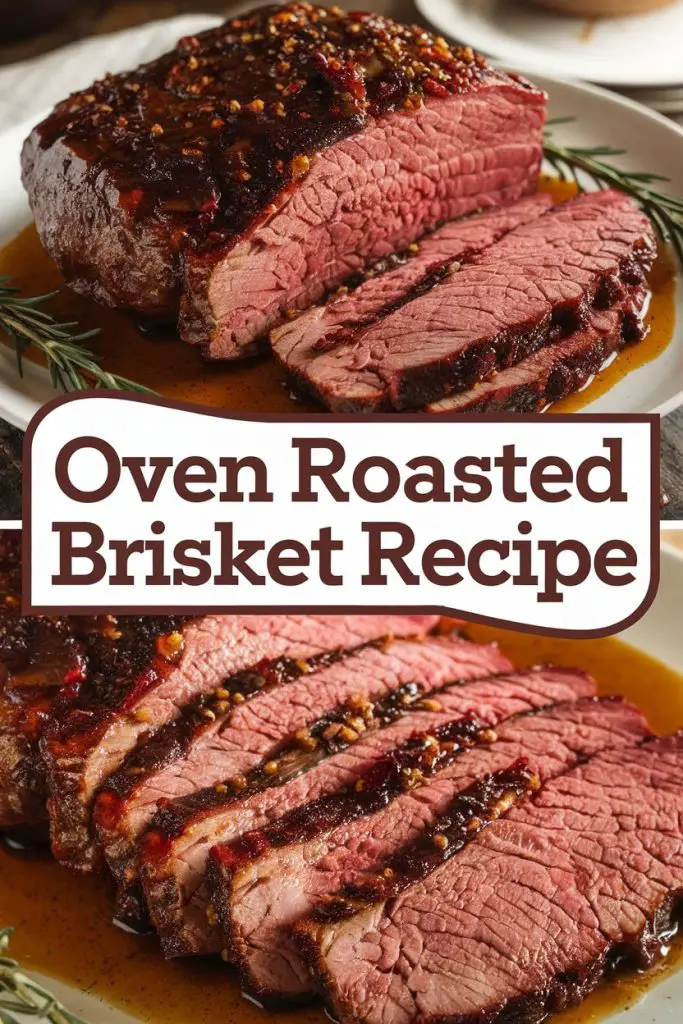
Get ready to indulge in a mouth-watering oven roasted brisket. It’s perfectly cooked using expert cooking techniques. With many brisket recipes online, finding the right one can be tough. This guide will show you how to cook the perfect oven roasted brisket, from start to finish.
Whether you’re new to cooking or have experience, learning to cook tender and flavorful brisket is easy. We aim to give you a detailed guide on cooking the perfect oven roasted brisket. We’ll cover key topics like choosing the right brisket, preparation steps, and seasoning blends.
By following our expert advice and tested brisket recipes, you’ll make delicious oven roasted brisket. It’s sure to impress your family and friends. So, let’s explore the best cooking techniques for oven roasted brisket perfection.
What Makes a Perfect Oven Roasted Brisket
Choosing the right brisket cut is key to a perfect oven-roasted brisket. The quality of the brisket greatly impacts the final dish. Marbling and thickness are crucial for tenderness and flavor.
Brisket cuts, like flat cut or point cut, differ in suitability for slow cooking. A high-quality brisket has the right amount of marbling. This fat keeps the meat moist and flavorful during slow cooking.
The brisket’s thickness also matters. It affects cooking time and the dish’s texture. Selecting a brisket with the right marbling and thickness is vital for a tender, flavorful brisket.
- Marbling: Look for a brisket with a good balance of marbling to ensure moisture and flavor.
- Thickness: Choose a brisket with the right thickness to achieve the desired texture and cooking time.
- Brisket cuts: Understand the different types of brisket cuts, such as flat cut or point cut, and select the one that is best suited for slow cooking.
By choosing the right brisket cut and understanding meat quality, you’re set for success. With the right techniques and patience, you’ll get a tender, flavorful brisket. It’s sure to impress everyone.
Essential Equipment for Oven Roasted Brisket
To get the perfect oven-roasted brisket, you need the right tools. This includes a good oven, a big Dutch oven or heavy roasting pan, a meat thermometer, and a sharp knife. The right tools make cooking easier and the brisket tastes better.
Choosing the right equipment is key for oven roasting. A Dutch oven or heavy roasting pan is best because they distribute heat well. A meat thermometer is also crucial to check the brisket’s temperature.
It’s also important to pick a good brisket. Look for one that’s fresh, has enough fat, and is well-trimmed. With the right equipment and a quality brisket, you’re set to make a tasty oven-roasted brisket.
Here’s what you need to cook brisket:
- A reliable oven
- A large Dutch oven or a heavy roasting pan
- A meat thermometer
- A sharp knife for slicing
With the right equipment and techniques, you can make a delicious oven-roasted brisket. It doesn’t matter if you’re experienced or new to cooking. The right tools and knowledge are essential for success in the kitchen.
| Cooking Equipment | Description |
|---|---|
| Oven | A reliable oven is essential for cooking brisket |
| Dutch Oven or Roasting Pan | A large Dutch oven or a heavy roasting pan is ideal for oven roasting |
| Meat Thermometer | A meat thermometer is necessary for ensuring the brisket is cooked to the perfect temperature |
Selecting the Right Brisket
Choosing the right brisket is key to a great oven-roasted brisket. A good brisket selection ensures a delicious and tender dish. When buying, think about how many people you’re serving. A good rule is to get 1/2 to 3/4 pound of brisket per person.
The fat content of the brisket is also important. A brisket with the right amount of fat and lean meat will taste better and be more tender. Look for a brisket with a thick fat layer on one side. This helps keep the meat moist while it cooks. Also, make sure the meat smells fresh and feels firm.
- Size: Choose a brisket that is the right size for your needs
- Fat content: Look for a brisket with a nice balance of fat and lean meat
- Freshness: Select a brisket with a fresh smell and a firm texture
By keeping these tips in mind, you’ll find the perfect brisket for your recipe. This will lead to a delicious oven-roasted brisket.
Preparation Steps Before Cooking
Getting the perfect oven-roasted brisket starts with good preparation. This step is all about brisket preparation. It means trimming fat and seasoning right. This way, the meat absorbs flavors better, making it tender and tasty.
Trimming fat is a key part of brisket preparation. It lets the seasoning stick to the meat, enhancing its taste. Use a sharp knife to cut off any extra fat from the brisket.
Once the fat is trimmed, it’s time to season. Rub salt, pepper, and spices all over the brisket. This brings out the meat’s natural flavors and adds depth. You can use garlic powder, onion powder, or paprika for extra flavor.
Here are some extra tips for preparing your brisket:
- Pat the brisket dry with paper towels before seasoning.
- Let the brisket sit at room temperature for about 30 minutes before cooking.
- Use a meat thermometer to check if the brisket is cooked to a safe temperature.
The Perfect Brisket Seasoning Blend
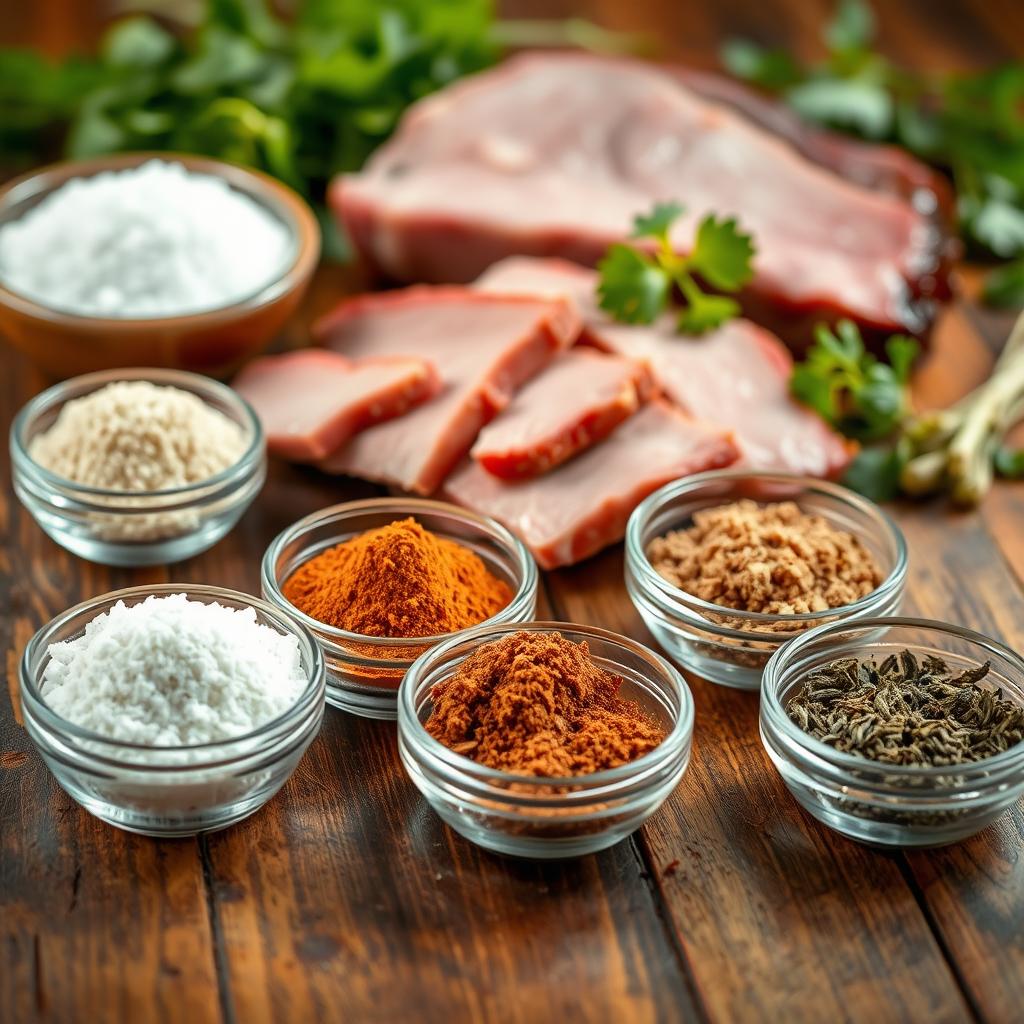
Choosing the right seasoning for oven-roasted brisket is key to great flavor. A good seasoning mix should have savory, sweet, and spicy notes. This makes the brisket tender and juicy. Use spices like paprika, garlic powder, onion powder, salt, and pepper for the best taste.
Making your own brisket seasoning lets you customize the flavors. Want smokier taste? Add more paprika or chipotle powder. For a spicy kick, try cayenne pepper or red pepper flakes. The goal is to find the perfect mix that brings out the brisket’s natural taste.
Here are some brisket seasoning blends to try:
- Classic blend: paprika, garlic powder, onion powder, salt, and pepper
- Spicy blend: paprika, garlic powder, onion powder, salt, pepper, and cayenne pepper
- Smoky blend: paprika, chipotle powder, garlic powder, onion powder, salt, and pepper
It’s crucial to apply the seasoning at the right time. Rub it all over the brisket before cooking, or let it sit for a few hours. Either way, you’ll get a flavorful brisket that everyone will love.
| Seasoning Blend | Ingredients | Flavor Profile |
|---|---|---|
| Classic | paprika, garlic powder, onion powder, salt, pepper | savory, slightly sweet |
| Spicy | paprika, garlic powder, onion powder, salt, pepper, cayenne pepper | spicy, smoky |
| Smoky | paprika, chipotle powder, garlic powder, onion powder, salt, pepper | smoky, savory |
Step-by-Step Oven Roasted Brisket Recipe
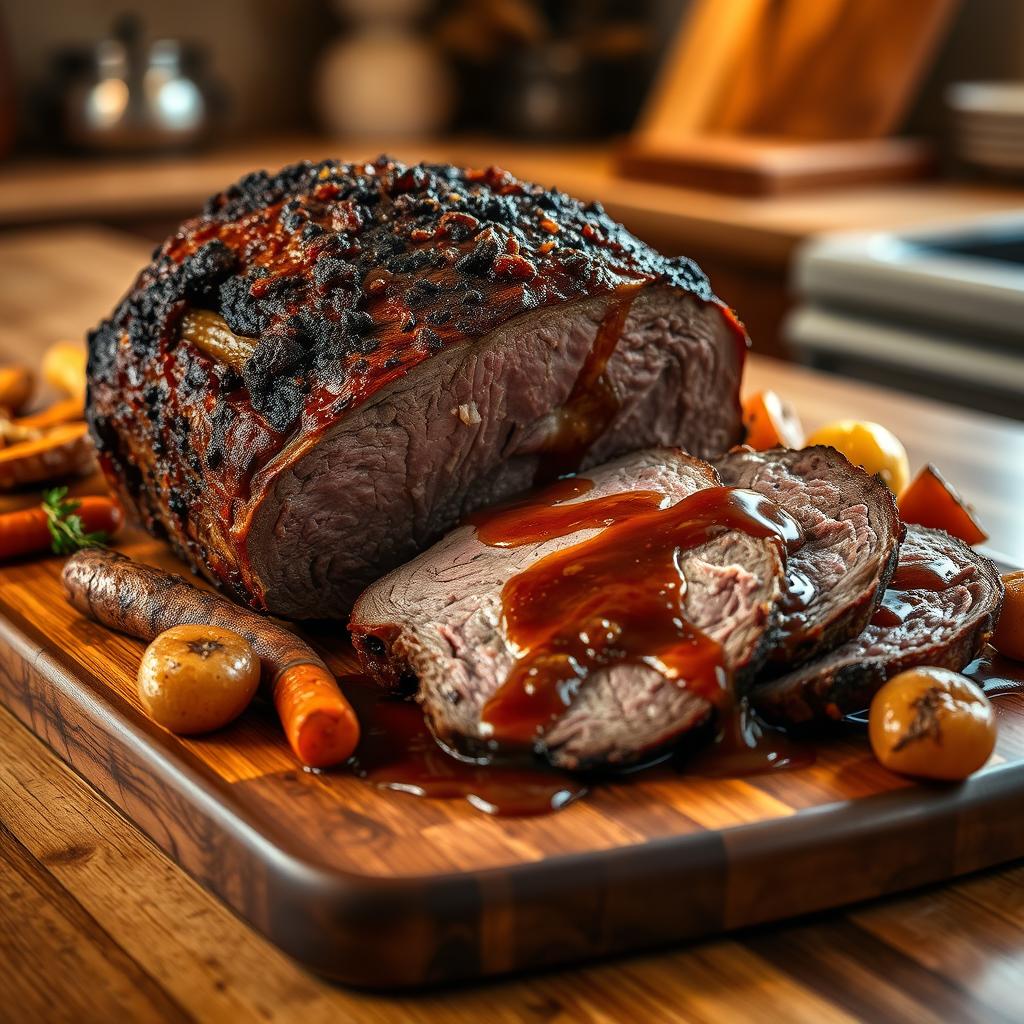
To make a tender and flavorful oven roasted brisket, follow these steps. First, preheat your oven to 300°F (150°C). Then, put the seasoned brisket in a roasting pan or Dutch oven. Cover it with a lid.
This slow cooking method makes the brisket tender and delicious. It cooks low and slow, which is key.
Patience is important for a great oven roasted brisket. It takes about 3-4 hours to cook, or until it reaches 160°F (71°C). Here’s how to do it:
- Preheat your oven to 300°F (150°C).
- Season the brisket to your liking.
- Put the brisket in a roasting pan or Dutch oven, and cover it with a lid.
- Cook for 3-4 hours, or until it reaches 160°F (71°C).
By following these steps and letting it cook slowly, you’ll get a delicious brisket. Always use a meat thermometer to check the temperature.
Monitoring Your Brisket
As your brisket cooks, it’s key to watch its progress for the perfect doneness. You need to check the brisket’s temperature and how tender it is. The cooking time changes based on the brisket’s size and type, so keep a close eye on it.
To check the brisket’s temperature, use a meat thermometer. Make sure it hits a safe internal temperature. Also, do the fork test to see if it’s tender. If a fork goes in easily, it’s ready to rest.
Here are some key factors to consider when monitoring your brisket:
- Brisket temperature: Check the internal temperature regularly to ensure it reaches a safe minimum of 160°F (71°C).
- Meat tenderness: Perform the fork test to check for tenderness, and adjust the cooking time as needed.
- Cooking time: Monitor the cooking time to prevent overcooking, which can result in a dry and tough brisket.
By watching your brisket’s temperature, tenderness, and cooking time, you’ll get a perfectly cooked brisket. It will be tender and full of flavor. Just remember to be patient and adjust the cooking time as needed for the best results.
With these tips and guidelines, you’ll be well on your way to creating a delicious and memorable oven-roasted brisket. Happy cooking!
| Brisket Temperature | Meat Tenderness | Cooking Time |
|---|---|---|
| 160°F (71°C) | Tender and easily pierced with a fork | 2-3 hours, depending on size and type |
Resting and Slicing Techniques
After cooking, it’s key to let the brisket rest before slicing. This step lets the juices spread out, making the brisket tender and tasty. Knowing how to rest meat is crucial for great results.
For slicing, a sharp knife and cutting against the grain are musts. Slice thickness depends on what you like, but thinner slices are easier to chew. Getting good at slicing brisket can really enhance your meal.
Here are some tips for resting and slicing:
- Let the brisket rest for at least 30 minutes before slicing
- Use a sharp knife to slice the brisket against the grain
- Vary the thickness of the slices based on personal preference
By following these tips and mastering slicing, you can enjoy a delicious brisket. Always remember to rest the meat for the best taste and texture.
With practice and patience, you can become a pro at resting and slicing. These tips will help you make a perfectly cooked and sliced brisket, whether you’re a seasoned chef or just starting out.
| Resting Time | Slicing Technique | Result |
|---|---|---|
| 30 minutes | Against the grain | Tender and flavorful |
| 1 hour | With the grain | Less tender and flavorful |
Troubleshooting Common Issues
Even with the best recipe and techniques, brisket cooking can still face challenges. Issues like a dry or tough brisket are common. To solve these problems, it’s key to find the cause and apply the right fixes. Overcooking often leads to dryness. Make sure to cook your brisket at the correct temperature and for the right time.
Uneven cooking is another issue, causing some parts to be tough while others are tender. Wrapping the brisket in foil helps keep it moist and cooks evenly. This simple trick can make a big difference. Here are some additional tips:
- Use a meat thermometer to check the brisket’s internal temperature.
- Let the brisket rest for a good amount of time before slicing.
- Try a marinade or rub to add flavor and tenderness.
By following these tips and being aware of common brisket issues, you can make a delicious, tender brisket. Troubleshooting is about finding solutions to common problems. With practice and patience, you’ll become a brisket-cooking pro.
| Common Issue | Cooking Solution |
|---|---|
| Dryness | Wrap in foil, cook at right temperature and time |
| Toughness | Use a meat thermometer, let rest for sufficient time |
| Uneven cooking | Wrap in foil, use a marinade or rub |
Delicious Side Dish Pairings
Choosing the right side dishes can make oven-roasted brisket even better. You can pick from classics like coleslaw and baked beans. Or go for something cozy like mashed potatoes and roasted veggies. The goal is to find dishes that bring out the brisket’s flavor without taking over.
Popular choices include warm bread loaves, corn on the cob, and roasted veggies. These add flavor and texture, making the meal complete. For something different, try salads or grilled veggies with your brisket.
Here are some more side dish ideas that go great with oven-roasted brisket:
- Coleslaw with shredded cabbage and a touch of vinegar
- Baked beans in a sweet and tangy BBQ sauce
- Roasted veggies like Brussels sprouts or carrots
- Mashed potatoes with a side of gravy
- Warm bread loaves straight from the oven
These dishes bring a mix of flavors and textures to the table. By picking the right sides, you can make a meal that’s both tasty and memorable. It’s sure to impress even the most finicky eaters.
Storing and Reheating Leftover Brisket
Keeping leftover brisket safe and tasty is key. Wrap it tightly in plastic or foil and chill or freeze it. Always heat it to 165°F (74°C) to keep it safe to eat.
You can reheat brisket in the oven, on the stovetop, or in the microwave. Pick the method that works best for you. For example, the oven at 300°F (150°C) for 30 minutes or stovetop low heat for 20 minutes.
- Refrigerate leftover brisket within two hours of cooking
- Freeze leftover brisket for up to three months
- Reheat leftover brisket to an internal temperature of 165°F (74°C)
Follow these tips to enjoy your brisket safely and well. Always store and reheat food right to avoid sickness.
Quality matters too. If your brisket smells bad or feels slimy, throw it away. Proper storage and reheating ensure a tasty, safe meal.
| Storage Method | Shelf Life |
|---|---|
| Refrigerate | 3 to 4 days |
| Freeze | Up to 3 months |
Conclusion
Cooking the perfect oven-roasted brisket needs focus, the right tools, and patience. By following this recipe conclusion, you’ll learn how to make a tender, tasty brisket. It’s sure to impress everyone.
Remember, getting it right takes practice. So, if your first try doesn’t turn out perfectly, don’t worry. Keep trying, and you’ll soon be a brisket cooking expert.
The secret to great oven-roasted brisket is paying attention to every step. From picking the right meat to seasoning and timing, each part matters. This guide will help you make consistently delicious brisket, making you the star of any event.
So, what are you waiting for? Get your ingredients ready, preheat the oven, and start cooking. Show off your brisket cooking skills to your friends and family. Enjoy the fruits of your labor and share your success with us. Happy cooking!
FAQ
What are the key factors to consider when selecting the perfect brisket?
When picking a brisket, think about the size for your guests. Also, look at the fat content for flavor and tenderness. A good brisket has a balance of fat and lean meat for the best taste and texture.
What type of equipment is needed to cook oven-roasted brisket?
You’ll need a reliable oven and a large Dutch oven or heavy roasting pan. A meat thermometer and a sharp knife for slicing are also essential.
How should I prepare the brisket before cooking?
Start by trimming excess fat from the brisket, if needed. Then, season the meat well. Trimming helps seasonings get deeper, and a good seasoning blend adds flavor.
What’s the best way to monitor the brisket during cooking?
Keep an eye on the brisket while it cooks. Use a meat thermometer to check the temperature. Also, use the fork test to see if it’s tender. If it’s easy to pierce with a fork, it’s ready to rest.
How should I rest and slice the cooked brisket?
Let the brisket rest after cooking to make it more tender and flavorful. When slicing, use a sharp knife and cut against the grain for the best texture.
How can I troubleshoot common issues when cooking brisket?
If your brisket turns out dry or tough, check the cooking temperature and time. Wrapping the brisket in foil can help keep it moist and cook evenly.
What are some delicious side dish pairings for oven-roasted brisket?
Great sides for oven-roasted brisket include coleslaw, baked beans, and corn on the cob. Also, try mashed potatoes, roasted vegetables, and warm bread. Choose sides that complement the brisket’s rich flavor without overpowering it.
How should I store and reheat leftover brisket?
Wrap leftover brisket tightly in plastic wrap or foil and refrigerate or freeze it. When reheating, make sure it reaches 165°F (74°C) for safety. You can reheat it in the oven, on the stovetop, or in the microwave.
Oven Roasted Brisket Recipe
Course: Beef Recipes, Dinner RecipesCook Time: 3-4 hours
Servings: 8-10
Ingredients
4-5 lb beef brisket, trimmed
2 tbsp olive oil
1 tbsp kosher salt
1 tsp black pepper
1 tbsp smoked paprika
1 tsp garlic powder
1 tsp onion powder
1 tsp dried thyme
1 cup beef broth
1 large onion, sliced
4 garlic cloves, smashed
2 tbsp Worcestershire sauce
2 bay leaves
Directions
- Prep Brisket: Preheat oven to 300°F (150°C). Pat brisket dry. Mix salt, pepper, paprika, garlic powder, onion powder, and thyme. Rub brisket with olive oil, then spice mix.
- Sear (Optional): Heat a large skillet over medium-high heat. Sear brisket 3-4 minutes per side until browned.
- Assemble: Place onion slices and garlic in a large roasting pan. Set brisket on top, fat side up. Pour broth and Worcestershire sauce around it. Add bay leaves.
- Roast: Cover tightly with foil. Roast 3-4 hours, or until fork-tender (internal temp ~195°F/90°C).
- Rest: Remove from oven, keep covered, and rest 30 minutes.
- Slice & Serve: Slice against the grain. Serve with pan juices or onions.
Notes
- Tips:
For best flavor, season and refrigerate brisket overnight.
Leftovers make great sandwiches or tacos.
Strain and reduce pan juices for a quick gravy.

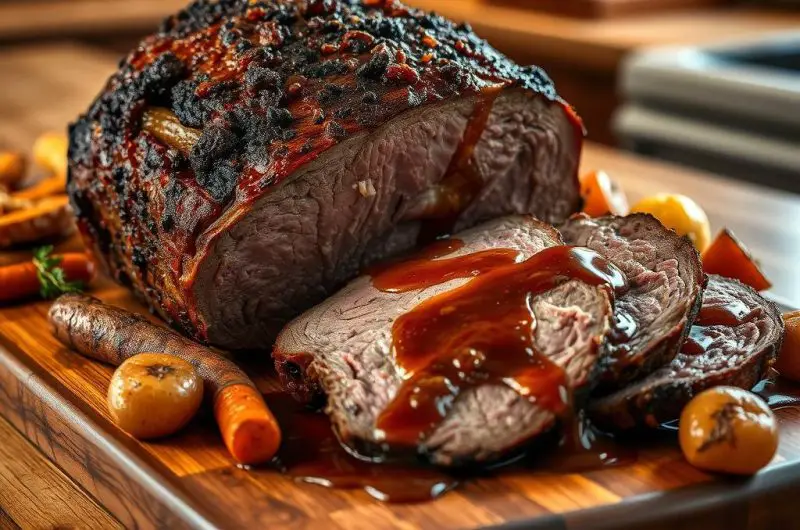
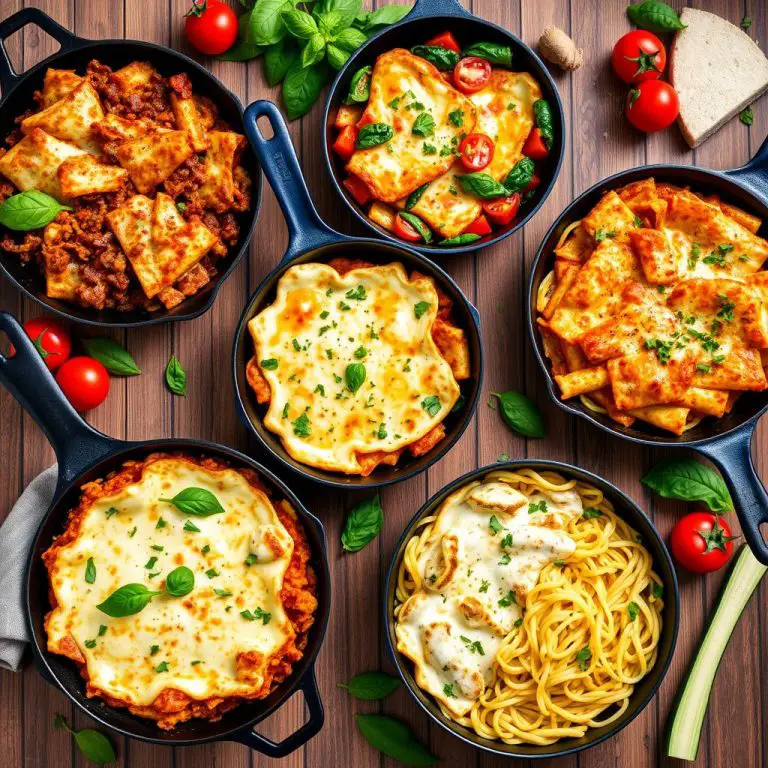
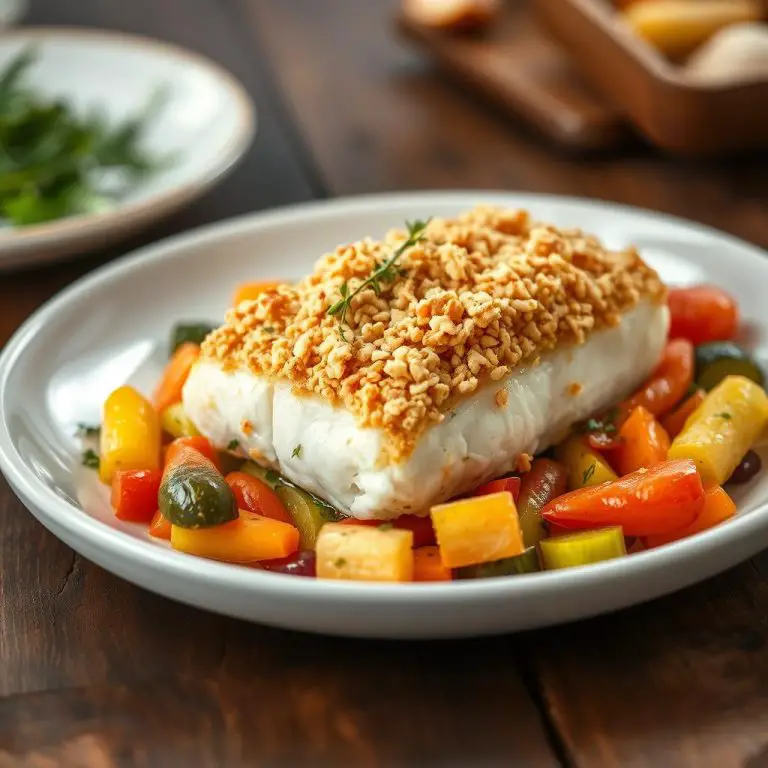
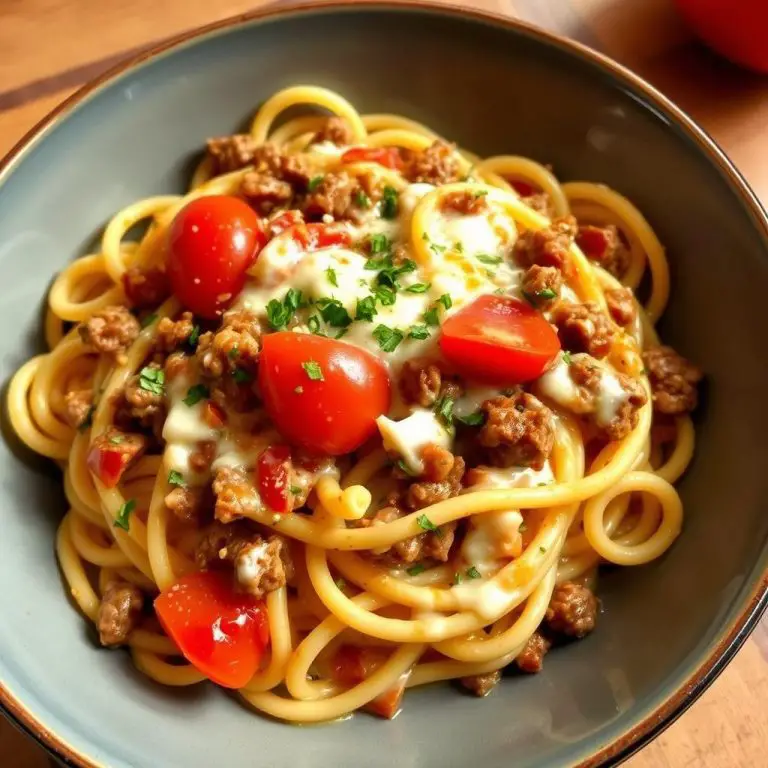
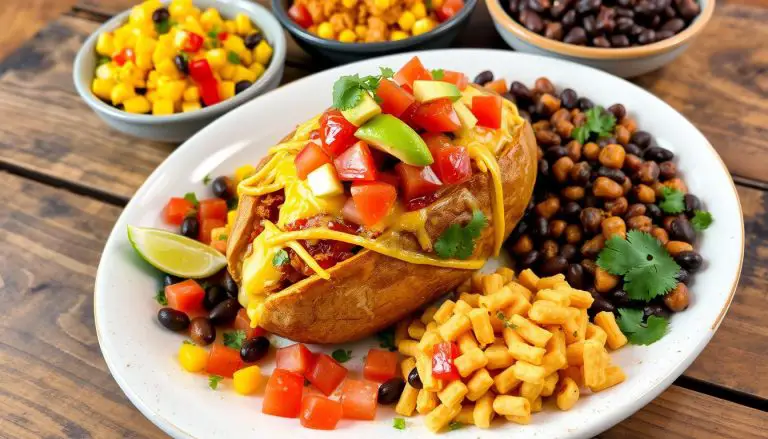


What People Saying About My Recipes!
Your garlic butter shrimp pasta is unreal! So creamy and packed with flavor. I made it for dinner, and my family was obsessed. Can’t wait to try more! 🍤
Those lemon raspberry scones? Pure bliss! They were so tender and just the right amount of sweet. Perfect for my brunch party. You’re a genius! 🥐
I tried your spicy mango chicken bowl, and wow! The flavors are so bold and fresh. It’s my new favorite lunch prep. Keep these recipes coming! 🥭